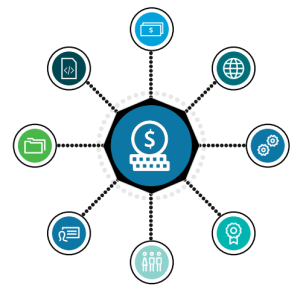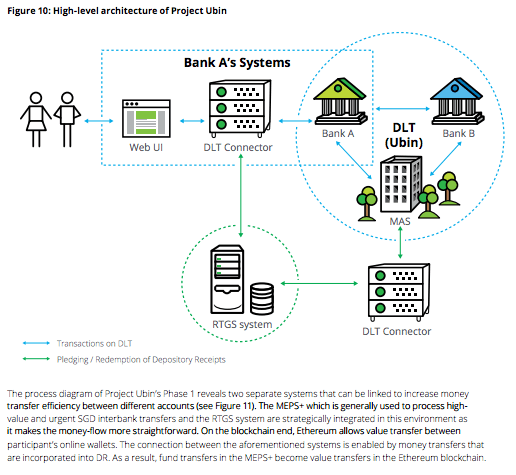
The Monetary Authority of Singapore (MAS), the country’s central bank and financial regulator, has released a new report detailing Project Ubin, an initiative triggered last year aimed at developing a tokenized form of the Singapore dollar (SGD) on a distributed ledger.

Project Ubin began in November 2016 when MAS announced a partnership with R3 to develop a proof-of-concept to conduct inter-bank payments facilitated by blockchain technology.
MAS said that the purpose here was to better understand blockchain and its potential benefits through practical experimentation. It noted that “digital central bank issued tokens” could enable the development of simpler to use and more efficient alternatives to today’s systems.
In Phase 1 of Project Ubin, which ran between November and December 2016, the project leveraged on MAS’s New MAS Electronic Payment System (MEPS+), a Real-Time Gross Settlement system (RTGS), to issue funds on a distributed ledger.
An Ethereum-based blockchain was designed to interface with the existing MEPS+ RTGS system, which allowed for a working integrated transfer prototype. The prototype was tested for the ability to transact 24/7, resilience against single points of failure, and timeliness of settlements.
The successful completion of Phase 1 was announced in March 2017.

Project Ubin will be implemented in multiple phases starting with distributed ledger technology for domestic payments. Going further, the project will focus on securities settlement and cross-border payments, the report says.
Project Ubin is run in partnership between MAS and R3 with participation of a number of financial institutions and banks including Bank of America Merrill Lynch, Credit Suisse, DBS Bank, the Hong Kong and Shanghai Banking Corporation Limited, JP Morgan, and Singapore Exchange, among others.
Project Ubin was inspired by a similar project called Project Jasper, which was carried out in Canada between March and June 2016 in partnership with R3, the Bank of Canada, Payments Canada and five R3 member banks in the Canadian market. In particular, the architecture, code and lessons learning from Project Jasper were applied to Project Ubin, the report says.
“Project Ubin was conceived as an opportunity for Singapore to take a leading role in research on central bank currency on a distributed ledger and Central Bank Digital Currencies (CBDCs),” the report says. “Singapore may be the first major financial center in Asia to fully explore the benefits of distributed ledger technology across a broad set of transformative applications.”
MAS said it plans to make available the prototypes developed and provide opportunities for students and working professionals to gain practical experience in developing real-world applications on blockchain technology. This could be done through hackathons organized in collaboration with tertiary institutions.

